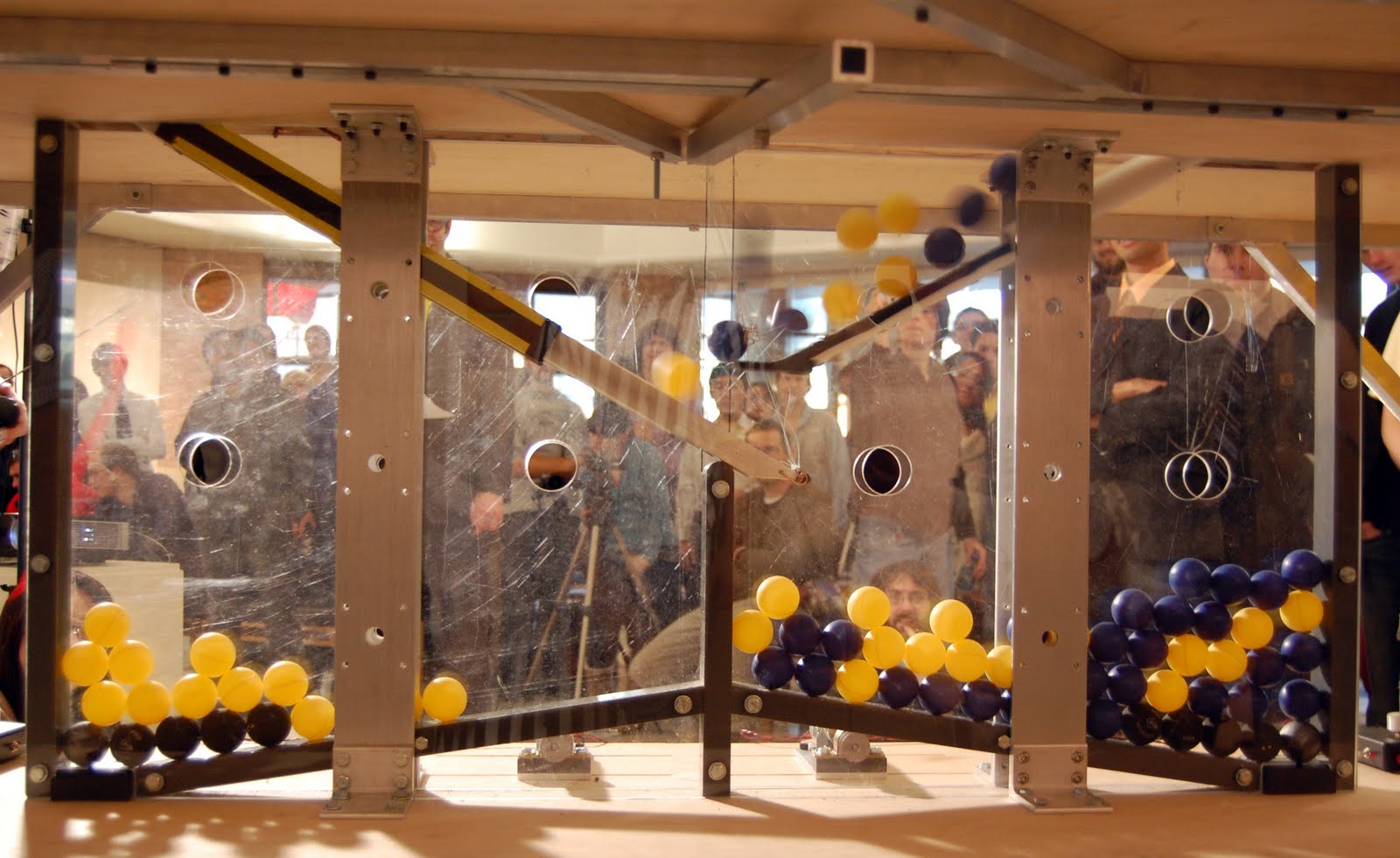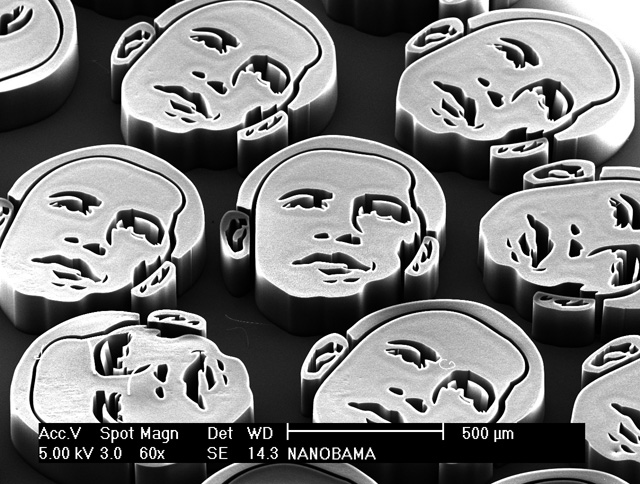 The Society of Manufacturing Engineers (SME) has selected ME Assistant Professor John Hart to receive the 2010 Outstanding Young Manufacturing Engineer Award. The award acknowledges Hart and eight other recipients, age 35 or younger, for their exceptional contributions and accomplishments in the manufacturing industry.
The Society of Manufacturing Engineers (SME) has selected ME Assistant Professor John Hart to receive the 2010 Outstanding Young Manufacturing Engineer Award. The award acknowledges Hart and eight other recipients, age 35 or younger, for their exceptional contributions and accomplishments in the manufacturing industry.
Hart’s particular interests are in the manufacturing and applications of nanostructured materials. While manufacturing traditionally uses a “top-down” approach, nanomanufacturing seeks to enable “bottom-up” approaches through the synthesis and manipulation of very small components.
“The general vision [of nanotechnology] is to make and control very small building blocks, and to put them together in a very specific way to make materials and devices with new and unique capabilities,” Hart explained.
Hart leads the Mechanosynthesis Group , whose work focuses on “synthesis, properties, and applications of nanostructures and nanomaterials.” The groups studies and develops nanostructures to be used in “high-performance solar cells and batteries, new methods of diagnosing and treating disease, next-generation computer processors and memory, and lightweight composite materials.”
The Art of Engineering
 “In the US, engineering is becoming more knowledge-based than ever before,” said Hart. “Some think that students no longer need hands-on experience. But students need it more than ever.”
“In the US, engineering is becoming more knowledge-based than ever before,” said Hart. “Some think that students no longer need hands-on experience. But students need it more than ever.”
He views mechanical engineering as an especially hands-on discipline, as reflected in the ME250 class that he taught and comprehensively revised in fall 2009. The course culminated in a competition called “Slotbots.” The students spent the semester creating radio-controlled machines to compete in the Slotbots game, with the objective of moving plastic balls from one side of “The Arena”—the structure in which the game was played—to the opponent’s side. At the end of two minutes, the team with the most balls on the opponent’s side won.
“The students experienced a lot of intellectual freedom,” said Hart. “They were given the game and the rules, and were asked to build a machine to execute the strategy, and we provided them the mental and physical tools to design and build a robust machine.” Though the class carried a more intense workload than previous ME250 classes, it provided the kind of hands-on experience that Hart sees as crucial to a mechanical engineering education, and Hart feels the students enjoyed and appreciated the experience. “This was a lot of work, and a lot of fun; and there is definitely something for us to build upon next year.”
In addition to his professorship in the ME department, Hart also teaches in the School of Art and Design. This semester, he will collaborate with A&D Associate Professor Endi Poskovic on a joint project in Poskovic’s printmaking class. “The processes of design and fabrication are universal,” he said, “to life, to every field. The ability to physically realize ideas is important, and extends way beyond the professional realm.” Hart’s keen appreciation for the relationship between art and science is perhaps most evident in his brainchild, the Nanobliss project.
 Nanobliss
Nanobliss
The inspiration for Nanobliss emerged while Hart was completing his Ph.D. in mechanical engineering at the Massachusetts Institute of Technology in 2006. At that time, his work focused on the creation and study of carbon nanotube structures. Beyond recognizing their significance to the field of engineering, he saw the structures as intriguing works of art, and wished to share the images with a wider audience in the form of a website.
However, the Nanobliss website, which Hart describes as “a gallery of visualizations of small-scale structures of carbon nanotubes and silicon,” was established with a greater purpose than to put aesthetically-pleasing art into cyberspace. “[Nanobliss] became a new way for me to communicate about the technology I was working on,” said Hart. “People from all around the world saw the images, got interested, and started asking questions.”
The project quickly gained recognition through word of mouth and with the help of coverage by several magazine articles. Hart’s creative fusion of science and art to produce the Nanobliss images was well-received both for its originality and for its relevance to the latest developments in the scientific world. During the 2008 presidential election, one of Hart’s projects entitled “nanobamas” boosted Nanobliss’s popularity considerably. The mini-portraits of Barack Obama’s face are based off the president’s famous red, white and blue campaign poster, and each was constructed from approximately 150 million carbon nanotubes.
“I was shocked by their popularity, but I shouldn’t have been,” reflected Hart. “The combination of new research involving nanotechnology, a word on the fringes of people’s knowledge, plus politics meant that the nanobamas caught fire.” Since its origin, hundreds of media outlets have featured Hart’s images, such as Science, Nature, New Scientist, American Scientist, SEED magazine, PC Magazine and Playboy.